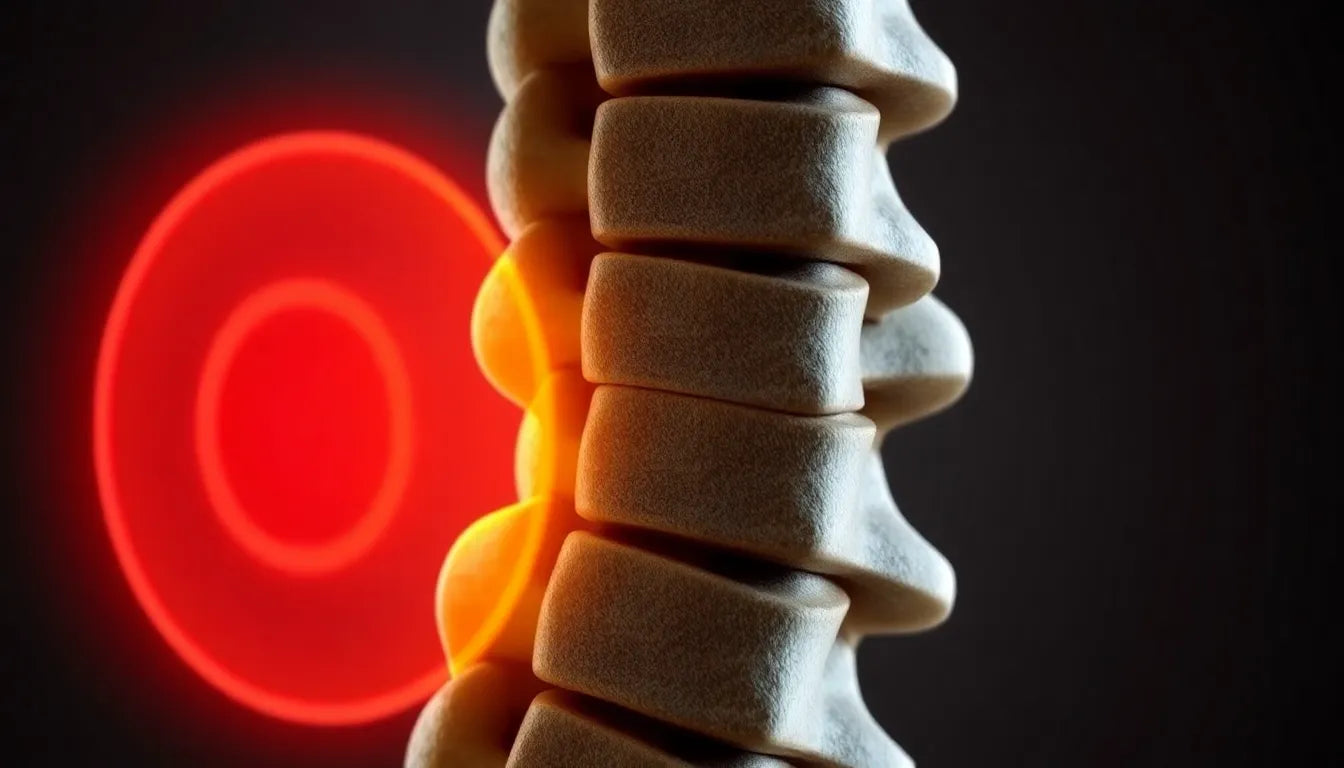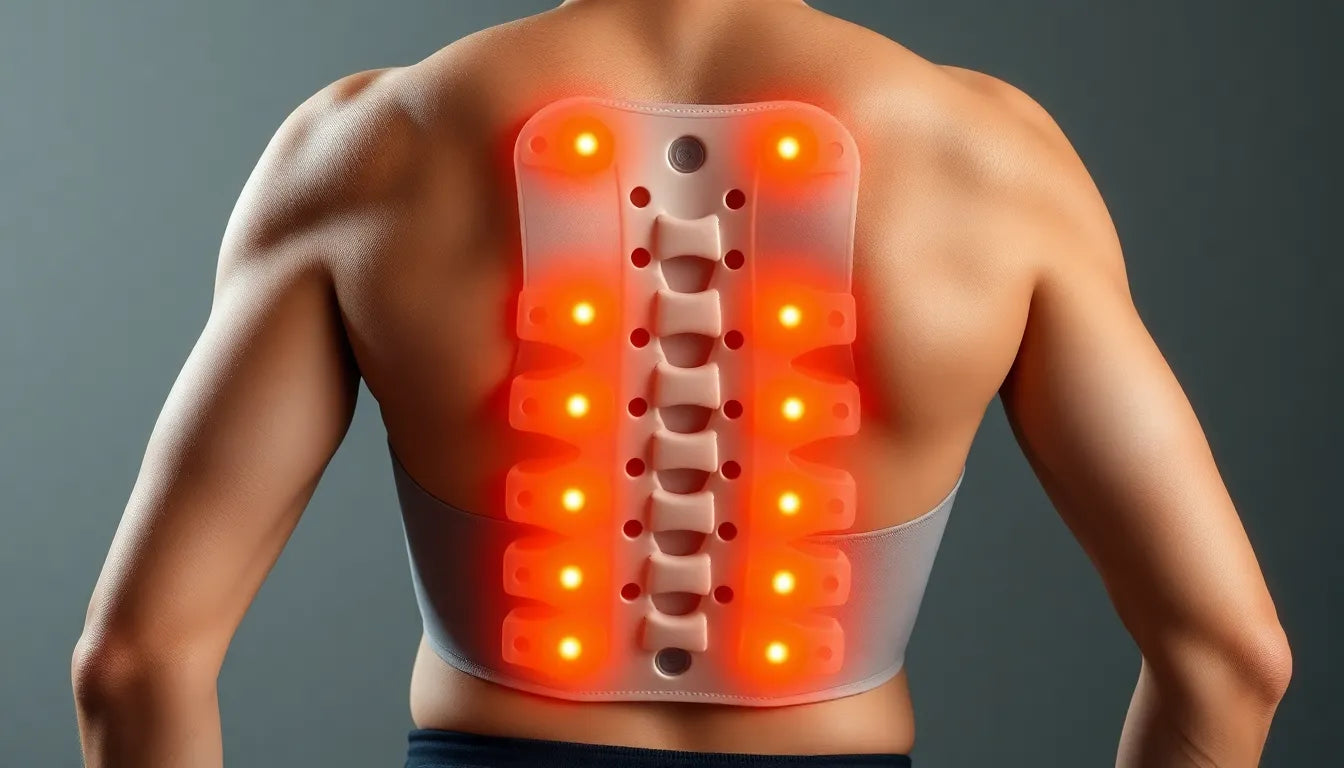Back pain is a common ailment that affects millions worldwide, impacting daily activities and overall quality of life. Whether it's a dull ache or a sharp, debilitating pain, the discomfort can be overwhelming. Among the various causes of back pain, a herniated disc is one of the most prevalent and misunderstood conditions. Understanding what a herniated disc is and how it affects the spine is crucial for anyone looking to manage or prevent this type of back pain effectively.
what is a herniated disc?
A herniated disc, sometimes referred to as a slipped or ruptured disc, occurs when the soft, gel-like center of a spinal disc pushes out through a tear in its tougher outer layer. This can happen anywhere along the spine but is most common in the lower back (lumbar spine) and neck (cervical spine). The spine is composed of a series of bones called vertebrae, which are cushioned by these discs. The discs act as shock absorbers, allowing for flexibility and movement while protecting the spinal cord and nerves.
When a disc herniates, it can press on the nerves surrounding the spine, leading to pain, numbness, or weakness in the areas served by those nerves. This pressure on the nerves is what causes the symptoms commonly associated with a herniated disc. While some people may not experience any symptoms, others might find the pain severe enough to interfere with their daily activities.
why understanding herniated discs is important
Recognizing the signs and understanding the mechanics of a herniated disc is vital for effective management and treatment. Early identification can lead to more successful outcomes, often preventing the need for invasive procedures. Moreover, understanding the risk factors and causes of herniated discs can help in taking proactive measures to prevent them. Factors such as age, weight, lifestyle, and even genetics can play a role in the likelihood of developing this condition.
By gaining a comprehensive understanding of what a herniated disc is, individuals can make informed decisions about their health, seek appropriate medical advice, and adopt lifestyle changes that may alleviate symptoms or prevent further injury. Whether you're dealing with back pain now or looking to avoid it in the future, knowledge about herniated discs is a powerful tool in maintaining a healthy, pain-free life.
anatomy and mechanics of a herniated disc
To fully understand a herniated disc, it's essential to delve into the anatomy of the spinal disc itself. Each disc is composed of two main parts: the nucleus pulposus and the annulus fibrosus. The nucleus pulposus is the inner core of the disc, a gel-like substance that provides cushioning and flexibility to the spine. Surrounding this nucleus is the annulus fibrosus, a tough, fibrous outer shell that holds the nucleus in place and absorbs the stress from daily activities.
A herniated disc occurs when the nucleus pulposus pushes through a tear in the annulus fibrosus. This can happen due to a sudden injury or gradual wear-and-tear over time. When the nucleus breaches the annulus, it can press against nearby spinal nerves, leading to the symptoms associated with this condition. The degree of herniation and the specific location in the spine determine the severity and type of symptoms experienced.
symptoms and affected areas
Symptoms of a herniated disc can vary widely depending on the location of the herniation and the nerves affected. Common symptoms include pain, numbness, tingling, and muscle weakness. These symptoms typically manifest in the area of the body served by the affected nerves. For instance, a herniated disc in the lumbar region (lower back) often leads to sciatica, characterized by pain radiating down the leg. Conversely, a cervical herniation (in the neck) may cause arm pain or weakness.
Understanding the typical locations for herniated discs is crucial for diagnosis and treatment. The lumbar and cervical regions are most commonly affected due to their high degree of movement and stress. A lumbar herniation often results in symptoms such as lower back pain, leg pain, and difficulty with mobility. In contrast, a cervical herniation might present with neck pain, shoulder pain, and arm weakness.
comparison of lumbar vs. cervical herniated disc symptoms
| Region | Common Symptoms |
|---|---|
| Lumbar | Lower back pain, sciatica, leg weakness |
| Cervical | Neck pain, arm pain, shoulder weakness |
causes and risk factors
Several factors contribute to the development of a herniated disc. One of the primary causes is the natural aging process, which leads to the gradual degeneration of the spinal discs. As we age, the discs lose water content, becoming less flexible and more prone to tearing. Injuries, such as lifting heavy objects improperly or sudden trauma, can also cause a disc to herniate.
Additionally, certain risk factors can increase the likelihood of experiencing a herniated disc. Poor posture, especially when sitting for long periods, can place undue stress on the spine. Engaging in repetitive activities that involve twisting or bending can also contribute. Genetics play a role as well, with some individuals being predisposed to disc degeneration. Maintaining a healthy weight and practicing good posture can help mitigate these risks, reducing the chance of a herniated disc.
Understanding these causes and risk factors is vital for both prevention and management of herniated discs. By recognizing the signs early and making necessary lifestyle adjustments, individuals can reduce their risk and alleviate symptoms, leading to a healthier and more active life.
diagnosis and treatment options for herniated discs
Diagnosing a herniated disc typically begins with a thorough physical examination by a healthcare professional. During the exam, your doctor may check for muscle strength, reflexes, and sensation to determine the affected nerves. If further investigation is needed, imaging tests such as MRI or CT scans can provide detailed views of the spine, confirming the presence and location of a herniated disc.
Treatment for herniated discs often starts with non-surgical options, which can be effective for many individuals. Rest and avoiding activities that exacerbate pain are crucial initial steps. Physical therapy can also play a significant role in recovery, helping to strengthen the muscles around the spine and improve flexibility. Anti-inflammatory medications may be prescribed to reduce pain and swelling, allowing for better mobility.
In cases where symptoms persist despite conservative treatment, surgery might be considered. Surgical options, such as a discectomy, involve removing the portion of the disc that is pressing on the nerve. However, surgery is generally reserved for severe cases where other treatments have failed, and the pain significantly impacts daily life.
lifestyle changes and prevention strategies
Preventing herniated discs involves adopting lifestyle changes that promote spinal health. Maintaining a healthy weight is essential, as excess weight can place additional strain on the spine. Regular exercise, focusing on strength and flexibility, helps support the spine and reduces the risk of injury.
Practicing good posture is another crucial preventive measure. Whether sitting at a desk or standing, keeping the spine aligned and avoiding slouching can minimize stress on the discs. Ergonomic aids, such as supportive chairs and adjustable desks, can further support posture and reduce strain during daily activities.
Additionally, incorporating proper techniques when lifting heavy objects is vital. Lifting with the legs rather than the back and avoiding twisting movements can prevent unnecessary pressure on the spine. By integrating these strategies into daily life, individuals can reduce the likelihood of developing a herniated disc and maintain a healthier spine.
frequently asked questions
What is the difference between a herniated disc and a bulging disc?
A herniated disc occurs when the nucleus pulposus pushes through a tear in the annulus fibrosus, potentially compressing nearby nerves. In contrast, a bulging disc involves less displacement, with the nucleus remaining contained within the annulus but causing the disc to protrude outward.
How long does it take for a herniated disc to heal?
The recovery time for a herniated disc varies among individuals but typically ranges from a few weeks to several months. Many people experience significant improvement within 4 to 6 weeks, though some cases may require longer for complete healing.
Can a herniated disc go away on its own?
Yes, a herniated disc can resolve naturally over time as the body reabsorbs the displaced material. Factors such as the severity of the herniation and adherence to treatment and lifestyle recommendations can influence the healing process.
What activities should be avoided with a herniated disc?
Individuals with a herniated disc should avoid activities that exacerbate symptoms, such as heavy lifting, high-impact sports, and prolonged sitting or standing. It's important to follow a healthcare professional's advice on activity restrictions.
Are there any exercises that can help with a herniated disc?
Gentle exercises and stretches can be beneficial for those with a herniated disc. Activities like walking, swimming, and specific physical therapy exercises can help alleviate pain and support recovery. Always consult with a healthcare provider before starting any exercise program.
Sources
- Mayo Clinic. "Herniated Disk - Symptoms and Causes."
- Cleveland Clinic. "Herniated Disk (Bulging Disk): Symptoms & Treatment."
- American Association of Neurological Surgeons. "Herniated Disc."
- Penn Medicine. "Herniated Disc - Symptoms and Causes."
- Physiopedia. "Disc Herniation."
- NewYork-Presbyterian. "Herniated Disc: Symptoms & Causes."
- Wikipedia. "Disc Herniation."



